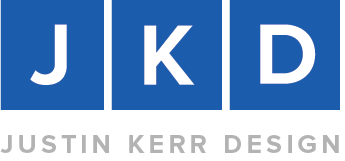How to Develop a Strong Brand Message
This video is an excerpt from a presentation I gave to a group of micro business owners about the foundational elements of a strong brand message. It’s a peek into the process I guide my clients through to help them develop their mission, vision, and values.
Want to have a conversation about your brand message? Start here.
Video Transcript:
The whole purpose of your brand is to define who you are and define your message and be able to effectively communicate that message to the world so that the people that resonate with that message will come seek you out and say, “I absolutely have to work with you because there's nobody else in the world that I would rather work with.”
And Laurie and I went through that process with Coaching Thoughtfully. So where we started was we started with looking at mission, vision and values, and I considered these to be the cornerstones or the foundational blocks of a brand message. And a lot of people, when they think of brand, they think, “Oh, we’re going to, we’re going to make a logo and we’re gonna talk about colors and all that stuff.
And that's definitely part of the universe, but it’s not where I start and where I started with the message, because if you get the message right, everything else falls into place. And you know, Ben can talk about this too. Because I took him through a similar process and he’s seen this image and this is how I describe mission and vision and values to the people that I work with.
And we start with values and the values are the boundaries that your organization operates within. So in this illustration of a footbridge, the guard rails, the side rails, there are the boundaries and they help you stay on target towards your destination. And the reason that values are important is because they also act as a filter. So there’s going to be a lot of things coming your way as a business, there’s going to be partners, strategic partners. There’s going to be maybe employees, there’s going to be processes. There’s going to be ideas and opportunities. And all of these can be filtered through your core values. So the ones that make it through are the ones that align with your values and the ones that don’t, even if they’re good, you have to say no to them because they don’t keep you on track.
And the vision is the clear, compelling picture of the future. It’s where you want to go. It’s where you want your organization to go. When I work with my clients, we usually talk about this in 10 years down the road, but it could be anywhere between now and 10 years down the road, but it’s that pin in the map. So if you’ve ever taken a road trip with your family, the first thing you decide on is, “Where are we going?”
You have a destination, whether it’s Disney world or whether it’s Yosemite or wherever you have to put that pin in the map and say, this is where we’re going. And then that allows you to start forming strategies on how are we going to get there, right? What are the steps we’re going to take to get to that destination? So the vision is that clear, compelling picture of the future. It’s where you want to be.
And then mission is your central purpose. It’s why your organization or your company exists. If you don’t have a why, there’s nobody on the bridge. And there’s no reason for that bridge to be there right now. We usually do them in this order: values, vision and mission.
And the reason that I do them in that order is because a mission statement can be quite intimidating for a lot of people. And there’s also some confusion about, well, what exactly should it say? So I like to start with values and we go through an exercise that helps define your values. And then we move through vision. And that’s an exercise in which I interview my clients, but I interview them 10 years in the future. And I’ve found that’s probably my favorite part of the process because in the vision exercise where we do that ten-year interview in the future is where a lot of this stuff comes out and the ideas and everything that’s been floating around in your head and bouncing around in there starts to come out and I’m able to start painting a picture for my clients using the vision exercise. So we start with values, we move through vision. And then by the time we get to mission, it’s not so intimidating anymore because a lot of the work that we’ve done up to that point has been pointing towards mission. And the mission statement in some ways kind of writes itself.
So those are the foundational blocks. Those are the order that we go through them in. And once we have that, now we have a clear and compelling brand message. We know what our values are. We know where we’re going and we know what our mission is, and we know what we're about.
